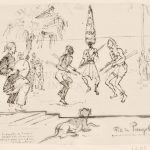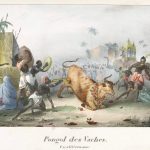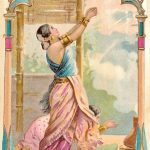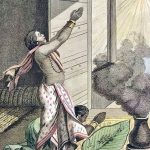

18th-19th century French views of Poṅkal/ Makara Saṅkramaṇa,
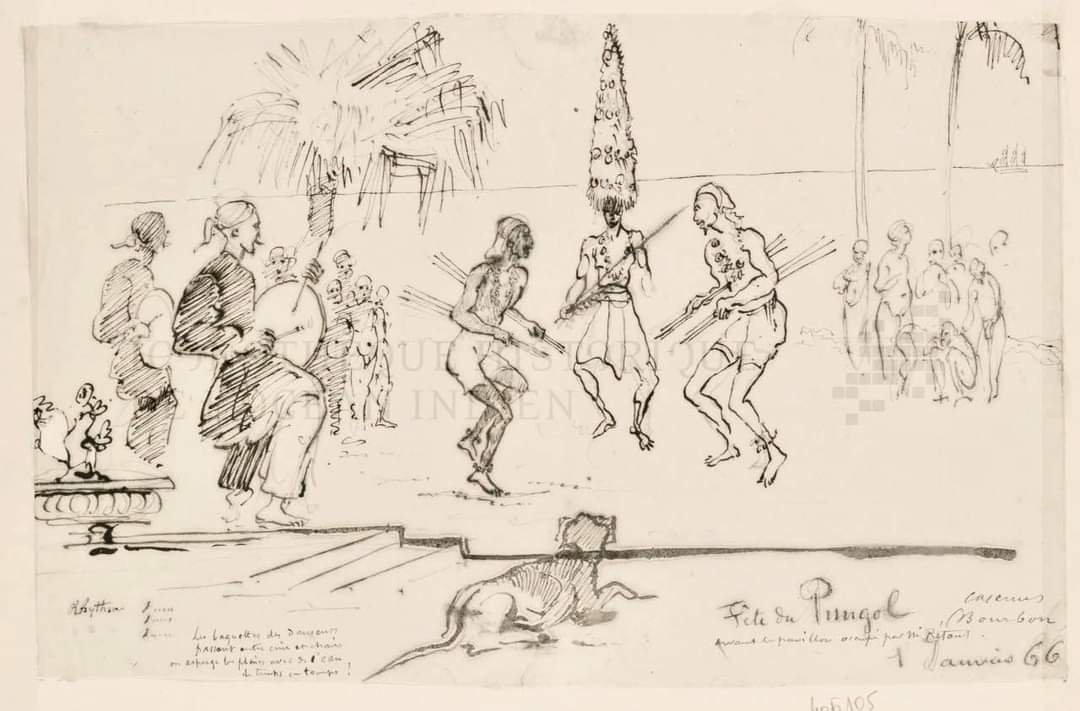
18th-19th century French views of Poṅkal/ Makara Saṅkramaṇa, the upcoming Indic hibernal harvest festival which also marks the beginning of the sun’s northward ascent in the sky. Curiously, the festival is not determined by indigenous calendrical systems but by the solar calendar of Babylonian origin. While pan-Indian in scope, the harvest festival goes by variant local names. In Tamil, it is named Poṅkal or ‘boiling over’ after the ritual boiling of milk-rice pudding. In French sources, it is variously spelt pongole, pungol or pongol. It is not only observed in the formerly French-controlled territories of Pondichéry and Karaikal but also in the French Caribbean and western Indian Ocean islands like Réunion which continues to be an overseas French possession.
1. La fête du Pongol depicted on a trade card for Chocolat Poulain, one of the oldest chocolate brands in the Francophone world, late 19th century. The same image is also found in some late 19th century trade cards made for Arlatte et Compagnie, a major French chicory company. The image on this chromolithograph is modelled after a late 18th century engraving of Jean-Baptiste Poisson (no. 2)
2. Indiennes faisant Pongol, an engraving by Jean-Baptiste Poisson from Pierre Sonnerat’s Voyage aux Indes orientales et à la Chine (Paris, 1782). Sonnerat provides a fairly accurate description of the festival although he mistakenly thought that it only lasted two days (the actual festival takes place over four days):
“Dans le dixiéme mois, Taï, qui répond à Janvier, le premier de ce mois est le Pongol, la plus grande fête des Indiens; elle est destinée à célébrer le retour du soleil dans le Nord, & dure deux jours: le premier jour, on la nomme Boi-Pandigué ou Peroun-Pongol, ce qui signifie Grand-Pongol. La cérémonie consiste à faire bouillir du riz avec du lait, pour tirer des augures de la façon dont le lait bout. Dès qu’on apperçoit les premières ébullitions, les femmes & enfans crient Pongol, qui veut dire, il bout …” (pp. 240-241 on Pongol).
3. Hippolyte Mortier de Trévise, Fête du Pongol à La Réunion, Janvier 1866, Archives départementales de La Réunion.
4. Lithograph depicting jallikkaṭṭu or the bull entertainments on Māṭṭup Poṅkal, the third day of Poṅkal, 1827. This image was published in the first volume (1827) of L’Inde française, ou Collection de dessins lithographiés représentant les divinités, temples, costumes … des peuples indous qui habitent les possessions françaises de l’ Inde (1827-1835).
